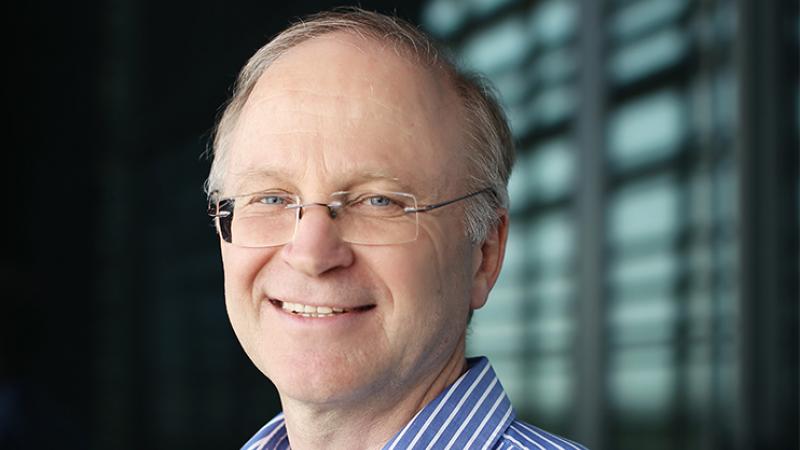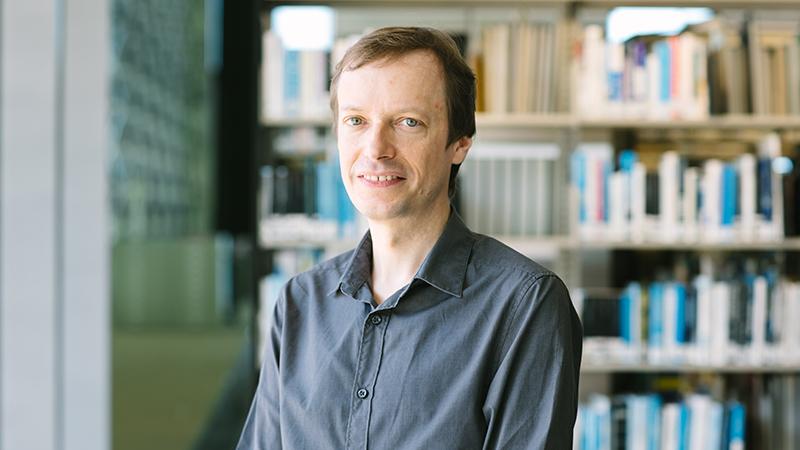Architecture is as much a science as an art. Science gives freedom to design. It enables performant structures, fluid spaces, more expressive forms, and sustainable and ultimately more beautiful buildings.
The Visual Computing Center at KAUST offers a unique opportunity to strengthen this link between architecture and science. We invite interested students of architecture to a week-long workshop on computational architecture. We want to bridge the gap between the latest research in geometry, computer graphics, simulation and modeling, and machine learning and design practice. Participants will have the opportunity to learn directly from our professors about their latest results in their fields.
We offer an open atmosphere to discuss potential applications in design as well as the needs of designers. Complementary to this theoretical part, we dive right into the design practice. You will be able to learn about geometry, surfaces, and shells by working on practical design tasks.
Together with experts in the field
- you will explore the fascinating world of deployable grid shells and web structures.
- you will use Rhinoceros 3D and Grasshopper in the design process, allowing you to deepen your knowledge and experience using these standard tools.
- you will be provided access to digital fabrication and rapid prototyping to build physical models.
The workshop is organized by the Visual Computing Center (VCC) in collaboration with KAUST Academy. The VCC is at the forefront of research in visual computing and a focal point of interdisciplinary work in geometry, simulation, visualization, machine learning, and other disciplines.
Workshop program
|
Sunday 29. Jan. 2023 - Grid Shells
|
|
|
08:30 – 09:00 |
Breakfast (optional) |
|
09:00 – 10:00 |
Introduction – Info session |
|
10:00 – 12:00 |
Eike Schling: Asymptotic Girdshells (Lecture) |
|
12:00 – 13:00 |
Lunch |
|
13:00 – 17:00 |
All: Design Studio (Team Building Exercise) Eike Schling: Design Studio (Digital Tutorial) |
|
Monday 30. Jan. 2023 – Simulation
|
|
|
08:30 – 09:00 |
Breakfast (optional) |
|
09:00 – 10:30 |
Dominik L. Michels: Simulation |
|
10:30 – 12:00 |
Design Studio (Digital Tutorial) |
|
12:00 – 13:00 |
Lunch |
|
13:00 – 17:00 |
Design Studio (Physical Workshop) |
|
Tuesday 31. Jan. 2023 – Geometry
|
|
|
08:30 – 09:00 |
Breakfast (optional) |
|
09:00 – 10:00 |
Florian Rist: Gestalt |
|
10:00 – 12:00 |
Design Review |
|
12:00 – 13:00 |
Lunch |
|
13:00 – 15:00 |
Helmut Pottmann: Architectural Geometry |
|
15:00 – 18:00 |
Design Studio (Physical Workshop) |
|
18:00 – 20:00 |
Dinner in Thuwal |
|
Wednesday 1. Feb. 2023 - Machine Learning
|
|
|
10:00 – 12:00 |
Peter Wonka: Machine Learning |
|
12:00 – 13:00 |
Lunch |
|
13:00 – 17:00 |
Design Studio (Physical Workshop) |
|
Thursday 2. Feb. 2023 – Presentation
|
|
|
10:00 – 14:00 |
Project presentations (Lunch will be served) |
|
14:00 – 15:00 |
Concluding discussion -- Closing |
Eike Schling
Eike Schling is an Assistant Professor at the University of Hong Kong, Department of Architecture, teaching parametric methods, architectural geometry and structural behavior with the vision of enabling construction-aware design. Eike’s focus lies on interdisciplinary research with mathematicians and engineers to simplify complex lightweight structures without sacrificing their design-freedom. Eike completed his doctorate “Repetitive Structures” in 2018 with distinction at the Chair for Structural Design, Technical University in Munich. His architectural practice has produced innovative, strained gridshells in Munich and Ingolstadt. Eike has worked with international architecture offices, in London, Montreal, Shanghai and Munich PLP Munich.
Title: Asymptotic Gridshells
This session will be composed of
- Team Building Exercise: Full-Scale Gridshell Construction
Students will construct a 4x4m quadrilateral gridshell from a kit of parts. - Lecture: Architectural Geometry and Structure
The lecture will cover Prof. Schling’s latest research of Asymptotic Gridshell in Steel, Glass Fibre and Timber Lamellas. - Digital Tutorial: Form-Finding of Spatial Structures
A digital Tutorial introducing simple form-finding techniques for gravity, tension, elasticity and pressure, using Rhino, Grasshopper, Kangaroo - Digital Tutorial: Curvature Analysis and Design
A digital Tutorial introducing simple NURBS surface modeling, As well as curvature analysis of surfaces and curves. This can be extended to introduce the Bowerbird pathfinder for curvature paths, including their specific curvature analysis. using Rhino, Grasshopper, Bowerbird). - Physical Workshop: Experimental Gridshells
Together with Florian Rist, we will bring model building material for Lamella.
We will offer:
- Glassfibre lamellas including 3D printed joints for asymptotic gridshells
- Timber lamellas including bolts and nuts for geodesic gridshells
- Plastic rods including cable binders for general elastic gridshells
Florian Rist
Title: Gestaltung
Understanding design as a process not only striving for the development of aesthetic shapes but in a much broader sense, as the Bauhaus or the Hochschule für Gestaltung Ulm did, this talk explores the interaction between geometry and three-dimensional design. Practical approaches to utilize the close interrelation between mathematics and the development of complex designs through computational or complementary physical approaches are illustrated, examining the integration of science and art pioneered at HfG Ulm
Helmut Pottmann
Title: Curvature Analysis for Design and Fabrication
Before producing a shape, one should analyze its suitability for the desired application. Here, curvature of curves and surfaces comes into play. After a short and simple introduction to the curvature behavior of curves and surfaces, the presentation will concentrate on the target application of gridshells that are formed by bending straight lamellas and placing them tangential or orthogonal to a reference surface. The underlying geometric concepts are geodesic and normal curvature of surface curves, geodesic curves, asymptotic curves, and developable surfaces. They will be explained in a purely geometric way, mostly based on so-called discrete models. The latter are important since they form the basis of computational approaches.
Dominik L. Michels
Climate change impacts communities and human habitats worldwide and locally in different ways. A multitude of interdependencies between, for example, geophysical and human-made factors make adaptations to this changing world extraordinarily challenging. Coarse prediction models, for example predicting an increase of temperature and a decrease of rainfall in specific regions, are not sufficient to allow communities to prepare for and adapt to the multifaceted impacts in their local environment. Urban planning, for example, in progressively heat-stricken areas should incorporate building surfaces that reflect radiation, allow cooling wind to flow freely through neighborhoods, and strategically place plants in areas where shade is needed most. In order to address such needs, we aim to develop the required digital modeling and simulation capabilities by combining our expertise in geometric modeling and computational architecture, physics-based modeling and numerical simulation, and visualization. The necessity for these capabilities is similarly evident if we consider rural and farming regions or forests; these complex ecosystems also maintain their own climate.
Similarly, detailed geometric models are required as it has recently been established that climate change not only has an impact on plant ecosystems, but that vegetation also contributes to local weather variations, resulting in diverse microclimates in contrast to the overall macroclimate. On a larger scale, urban, rural and farming, and forest areas are interconnected and changes within each area can easily cause effects beyond the direct environment. In this context, modeling and simulation of weather phenomena is at the core of our work considering detailed representations of the underlying geometric structures at the level of individual objects such as buildings or trees. Such high-resolution data are of fundamental importance in order to adapt to the associated challenges of a changing environment and to support a climate-resilient community. Furthermore, the data obtained from modeling and simulating these complex environments could serve as synthetic training data, leveraging machine learning capabilities for smart cities and the development of state-of-the-art land use concepts
Peter Wonka
Title: Generative Modeling for Architectural Content Creation
In this session we will look at an overview of deep learning methods for content creation that fall under the umbrella of generative modeling including autoencoder, GANs, and diffusion models. We will look at both the generation of images as well as the generation of 3D models or aspects of 3D models. We will discuss what type of problems can be tackled with generative models and show many practical examples. In particular, we will discuss prompt engineering and show examples of image generation using a diffusion model. Students are encouraged to bring their laptop to follow these diffusion examples and try some of their own creations.

